Cincinnati transfer QB Brendan Sorsby to visit Texas Tech on Friday, report says
2026 NCAA football transfer portal: Tracking moves for Texas Tech, SMU, other area schools


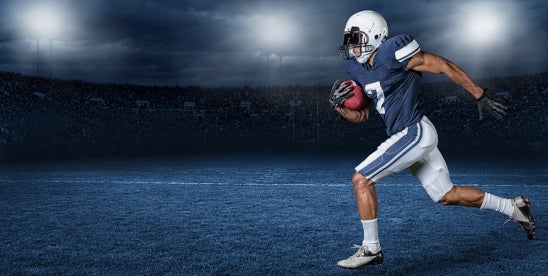
College athletics in the United States underwent a substantial change in July of 2021 after individual states began enacting laws to permit student-athletes to legally monetize their name, image, and likeness (NIL) without the fear of losing either their athletic scholarship or eligibility. These state laws, for the most part, now allow college athletes to receive compensation from brands, marketing firms, broadcasting, and social media companies, or any other entity that wishes to retain their services. As college athletes began to capitalize on their individual NIL, the question became – what about high school athletics? Could a student-athlete competing at the high school level earn compensation from their NIL comparably to a college athlete? The answer – depends on the state in which that athlete is competing.
Currently, forty states, in addition to the District of Columbia, permit high school athletes to earn money from selling or licensing their NIL rights without forgoing eligibility or the right to participate. Of the ten remaining states, five have legislation currently pending that could eventually permit such activities.1 Interestingly, one state that previously banned NIL practices was North Carolina – that was until a lawsuit was filed against the state’s Board of Education compelling them to do otherwise.
That lawsuit, brought by Rolanda Brandon, on behalf of her minor son Faizon Brandon (a highly rated 5-star quarterback), was filed on August 23, 2024, in North Carolina’s General Court of Justice, Superior Court Division against the North Carolina State Board of Education and North Carolina Department of Public Instruction. Per the complaint, the Brandons asserted that although the state of North Carolina’s legislature did direct the North Carolina State Board of Education to regulate how high school athletes could monetize their NIL, that the Board, in lieu of regulating, prohibited it outright.2 Because the Board of Education exceeded their delegated statutory authority, the Brandons claimed, its NIL prohibition was arbitrary and capricious and therefore invalid pursuant to N.C. State Stat. Section 1-253 and the North Carolina Rule of Civil Procedure 57. The Brandons sought a preliminary injunction against the Board’s NIL ban due to the fact that Faizon and his family would be irreparably harmed financially because it precluded them from entering into a formal licensing and endorsement agreement with NIL Sponsor 1, while also foreclosing any additional opportunities with other businesses in the future.3
By way of background, in September of 2023, the North Carolina state legislature adopted a bill directing the Board of Education to “adopt rules governing high school interscholastic athletic activities conducted by public school units” including “student amateur status requirements, and rules related to use of a student’s name, image, and likeness.”4 On July 1, 2024, the North Carolina State Board of Education, in lieu of adopting a set of regulatory rules, instead outright banned every public high school athlete from using his or her name, image, or likeness for commercial purposes.5 That outright prohibition, however, apparently was an overreach by the Board of Education because on October 1, 2024, Superior Court Judge Graham Shirley granted the Brandons’ motion for preliminary injunction and enjoined the Board from prohibiting any athlete attending a public school in the state of North Carolina from exercising his or her right to monetize their NIL.
Although the state of North Carolina’s ruling is not legal precedent for the other remaining states currently foreclosing high school athletes from monetizing their NIL, those states should take notice and understand that their prohibition may be vulnerable to a legal challenge. That being said, with no national standards regarding NIL, most of the forty states that do allow for monetization rest upon their high school athletics governing bodies to formulate any and all rules and regulations. This leads to a variation of standards between states, but there are a few key restrictions present in most of these rules that high school athletes should be aware of:
In those states where NIL opportunities are allowed, high school athletes have a chance for a significant financial windfall. However, athletes, their parents, and those advising them must ensure that any NIL agreement is in accordance with the applicable rules of their state, since noncompliance could lead to loss of eligibility to participate in athletic competition, which will certainly jeopardize any future athletic and financial opportunities.
1 Michigan, Delaware, Wyoming, Texas, and Alabama.
2 Brandon v North Carolina Board of Education, et al, 24CV026975-910
3 24CV026975-910 Complaint at page 20.
4 2023 N.C. Sess. L. 133 Section 17. (a) (N.C. Gen Stat. Section 115C-407.55(1)(h))
5 ATHL-008 (NIL Prohibition).
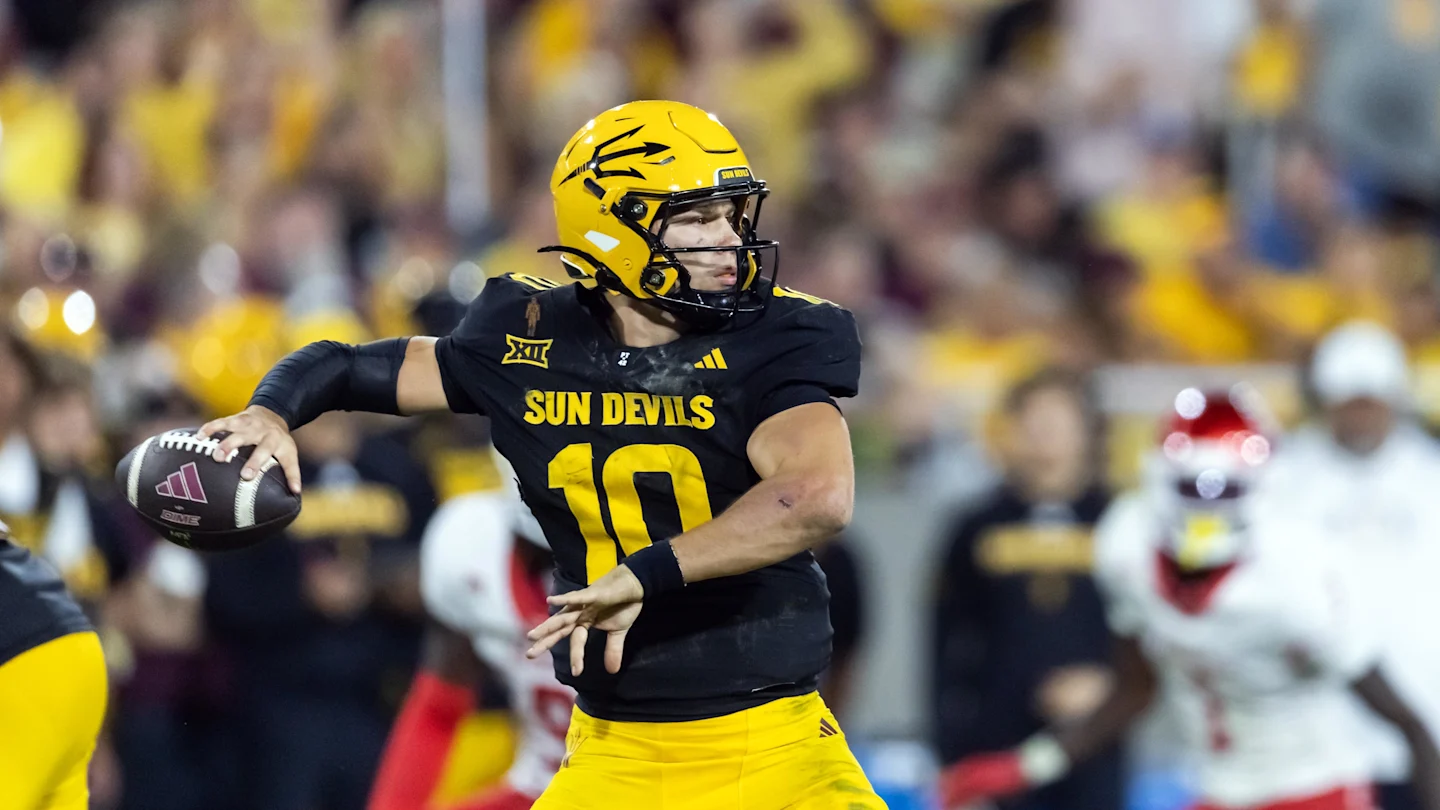
This year’s lone NCAA transfer portal window officially opened on Friday, as thousands of players across the country look for an opportunity to find a new place to call home.
The transfer portal as a whole is the wild west reincarnated and on steroids, as just about anything can happen. According to On3, last year’s portal cycles saw 4,184 players enter their name, with 68% of them committing to a new school while just 3.61% withdrew their names. Where things get complicated is the fact that a player can enter his name into the portal, but not find a landing spot for himself somewhere else. It also doesn’t mean that a player has to leave, but schools aren’t obligated to preserve their place on the team if they don’t want to.
However, the transfer portal experience varies for every player. While some athletes risk their careers by entering, others will have some of the biggest schools in the country throwing significant money at them.
The latter being one of the main reasons we see what is called a “do not contact” tag. Notable players such as Sam Leavitt (Arizona State), Isaac Brown (Louisville) and Luke Reynolds (Penn State) have entered their names into the portal with the tag, but what does that mean?
For the select few players who are good enough to take that risk it means one of two things: they either have an idea of where they are going, or they will be in contact with the schools that interest them.

While many will be outraged or naive about the matter, programs have been in touch with players months before the portal’s opening. Any inclination that the player might enter the portal throughout the year, whether it’s Leavitt getting hurt and his season ending prematurely or James Franklin being fired from Penn State, programs around the country find ways to stay in contact with the star players.
Again, this likely doesn’t apply to the backup quarterback leaving a Group of Five program, but not all situations are the same. For a player like Leavitt or Brown, they have a chance to essentially go to a school, see what it offers in terms of development, and also see how much it will offer. They then can go to another program and see if they will match or top the offer, and can control the bidding war over themselves.
The January portal window runs through Jan. 16 this year, and unlike in years past, there will be no spring window. So, once a player decides their next move, they have to live with it.
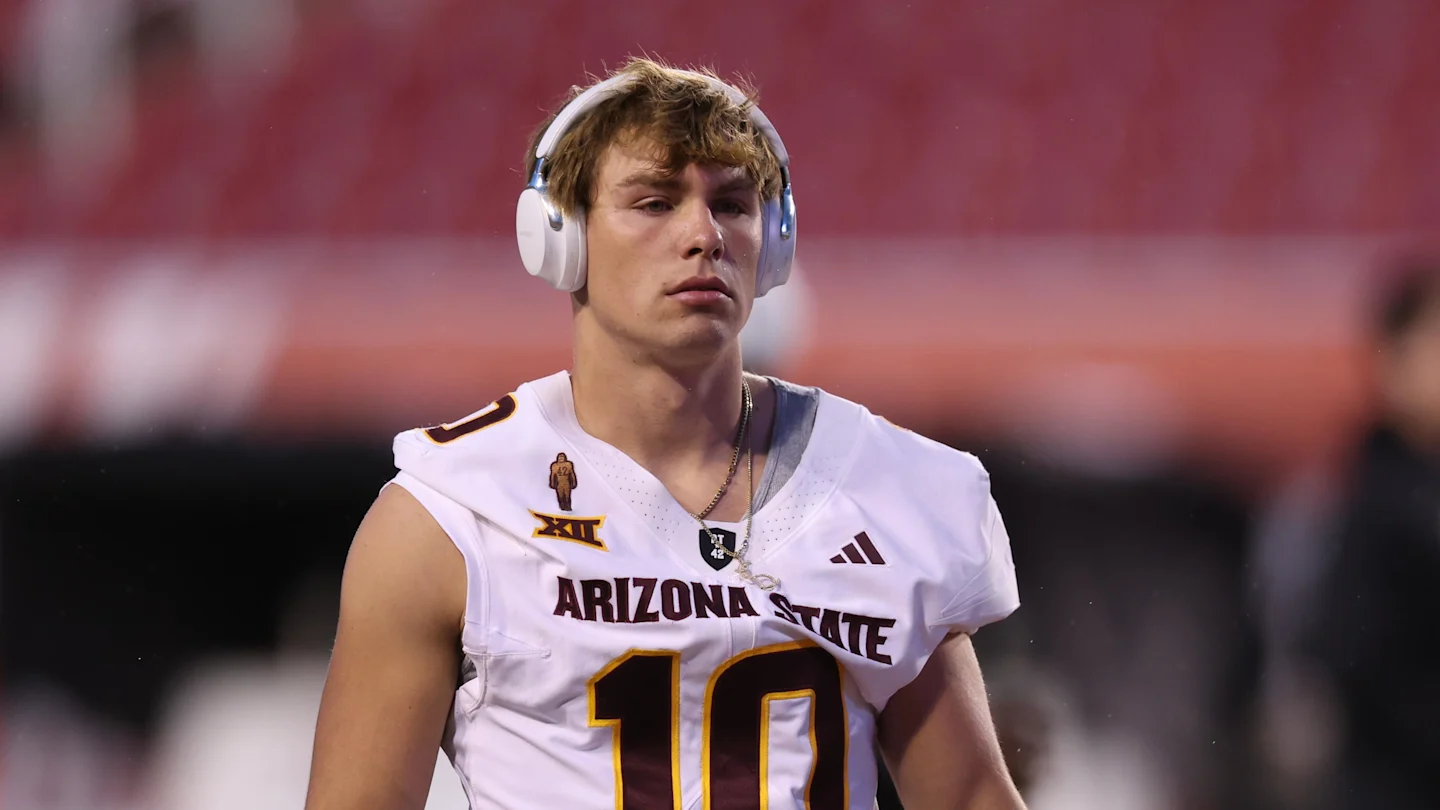
Former Michigan State transfer Sam Leavitt officially entered the NCAA transfer portal on Friday with a “do not contact” tag, meaning schools can’t reach out unless Leavitt or his camp makes the first move.
Leavitt burst onto the national scene in 2024 after transferring to Arizona State, establishing himself as the Sun Devils’ starter and finishing the season with 2,885 passing yards, 24 touchdowns and six interceptions, while adding 443 rushing yards and five scores as a true dual-threat.
He helped fuel ASU’s 11–3 finish and first-ever College Football Playoff appearance, earning Big 12 Offensive Freshman of the Year and second-team All-Big 12 honors.
Leavitt followed that up with solid production in 2025, throwing for 1,628 yards, 10 touchdowns and three interceptions while adding 300 rushing yards and five scores, though he was limited to just seven games after a lingering foot injury required season-ending surgery on October 31.
Before coming to college, Leavitt starred at West Linn High School in West Linn, Oregon, as a consensus four-star prospect and the No. 21 quarterback in the 2024 class per 247Sports, choosing Michigan State over offers from Washington State, Arizona, Florida State, and Washington.
With the transfer portal set to open at midnight Friday, On3’s Pete Nakos and Steve Wiltfong provided the latest intel on programs showing early interest, reporting that three schools have emerged as primary contenders for Leavitt — Miami, Oregon, and LSU — as the No. 1-ranked quarterback in the portal.

Oregon, Miami, and LSU each present a compelling scheme and situational fit for Leavitt.
Oregon offers a home-region landing spot with an offense built to maximize his mobility and timing with playmakers, while Miami provides a high-visibility ACC platform and a scheme well-suited for an accurate, aggressive quarterback as the Hurricanes continue to explore veteran portal options.
LSU also looms as a logical destination, with Lane Kiffin’s new staff actively working the portal and seeking an immediate upgrade at quarterback, where Leavitt’s experience and draftable traits would fit seamlessly.
It’s also worth noting that Oregon and Miami are both CFP semifinalists set to lose their starting quarterbacks, creating a rare opportunity for Leavitt to step into a title-contending environment right away.
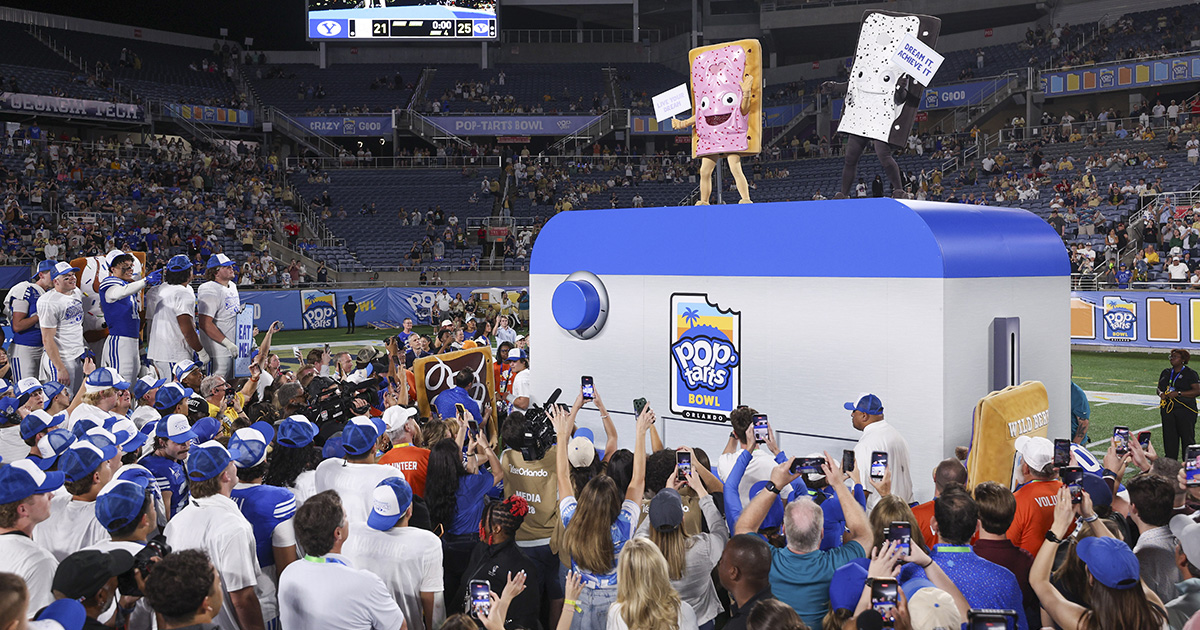
Through the first part of Bowl Season, ESPN has seen strong returns on its non-College Football Playoff games. The biggest one, of course, was the Pop-Tarts Bowl.
An average of 8.7 million people tuned in for the game, which saw BYU take down Georgia Tech on ABC, ESPN announced. It’s the best viewership for the game since 1991, when it was the Blockbuster Bowl, and became ESPN’s best non-CFP bowl game since the 2019-2020 Citrus Bowl.
SUBSCRIBE to the On3 NIL and Sports Business Newsletter
As a whole, ESPN’s bowl game viewership is up 13% for non-College Football Playoff games through Dec. 27, the network announced. On the whole, 2.7 million people on average have tuned in as multiple games drew strong numbers.
BYU’s victory over Georgia Tech came down to the final seconds as the Yellow Jackets fell short on the final possession. The Cougars then had the opportunity to partake in one of college football’s newest – and most popular – traditions. Head coach Kalani Sitake and the players got to eat one of the edible mascots after two of the three went into the toaster.
Protein Slammin’ Strawberry was the one who “escaped” beforehand, though. Officials for the Pop-Tarts Bowl game said it was the decision to “go pro,” which brought a new twist to the celebration.
The Pinstripe Bowl between Penn State and Clemson drew its best viewership on record as 7.6 million people tuned in for the Nittany Lions’ victory over the Tigers. Additionally, the Gator Bowl hit 6.0 million viewers on average – its best figure since 2009. Virginia took down Missouri in that game to secure a 10-win season for the Cavaliers.
At 4.4 million viewers, the Rate Bowl also drew its highest numbers since 2011 as Minnesota picked up yet another bowl game victory over P.J. Fleck, taking down New Mexico. The L.A. Bowl went out on a high note with a new record-high of 3.8 million viewers tuning in for Washington’s win against Boise State in the final installment of the game, as On3’s Brett McMurphy previously reported.
Three other bowl games drew record viewership, as well, according to ESPN. The First Responder Bowl between FIU and UTSA brought in 3.1 million viewers to set a new all-time high, while the Hawaii Bowl averaged 2.7 million viewers for Cal’s thrilling win over Hawaii on Christmas Eve. That made it the most-watched Hawaii Bowl since 2013. Finally, the Military Bowl averaged 2.5 million – its best since 2018 – as East Carolina took down Pitt.
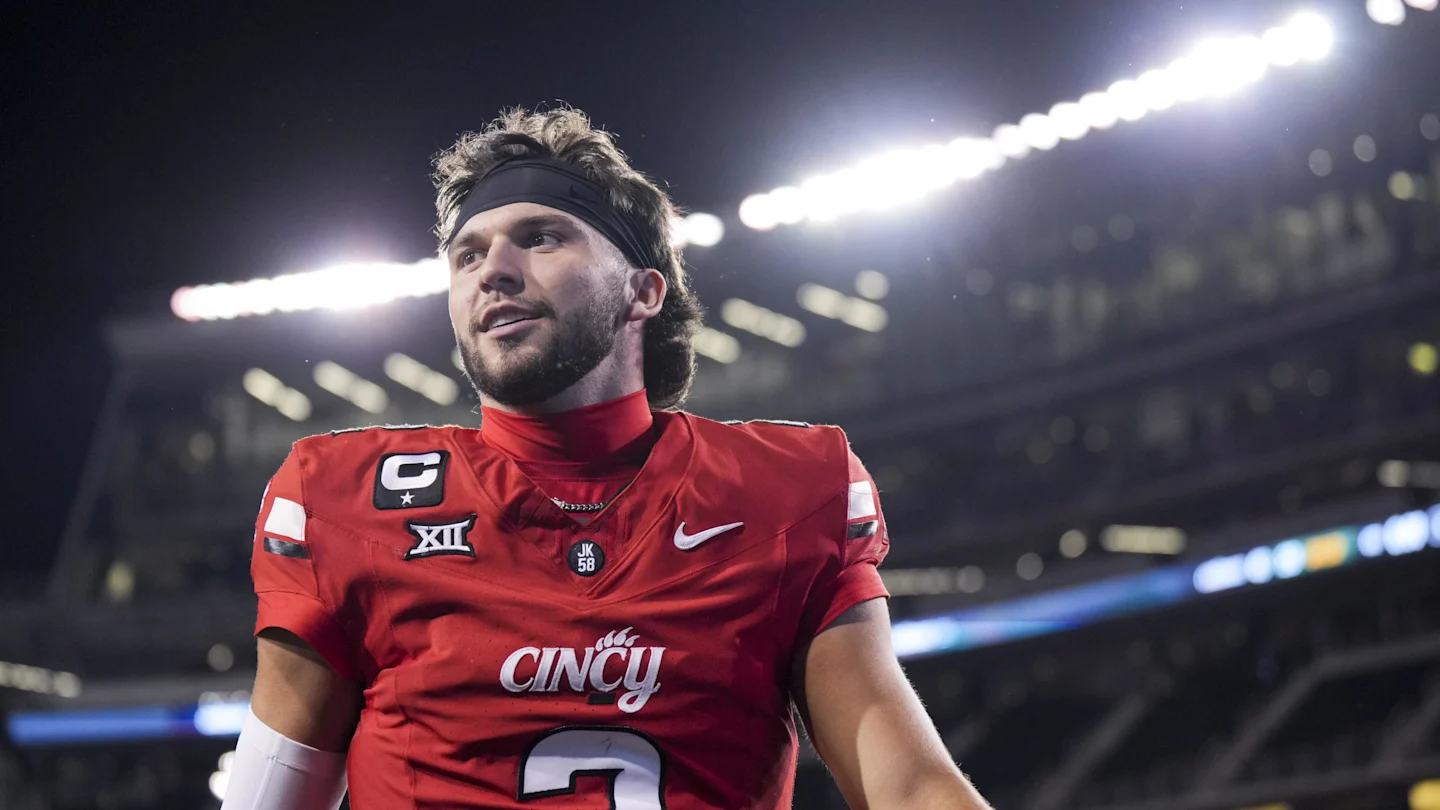
Quarterback Brendan Sorsby emerged as a productive, efficient starter for Cincinnati in 2025, throwing for 2,800 yards and 27 touchdowns against five interceptions, while adding 580 rushing yards and nine rushing scores on the ground, completing 61.6% of his passes across 12 games.
The Bearcats finished 7–5 overall (5–4 in Big 12 play) under third-year head coach Scott Satterfield, marking a two-win improvement from the previous season and the program’s best finish since the Luke Fickell era.
However, Sorsby informed Cincinnati of his intent to enter the transfer portal ahead of the window opening, which runs from January 2 to January 16.
A Denton, Texas, native from Lake Dallas High School, Sorsby was rated a three-star recruit and the No. 66 quarterback in the 247Sports Composite rankings for the 2022 cycle, initially committing to Indiana over offers from Army, Delaware, Navy, and East Texas A&M.
With the Hoosiers (2022–23), Sorsby redshirted in 2022 and appeared in just one game before playing in 10 contests in 2023, throwing for 1,587 yards, 15 touchdowns, and five interceptions while showcasing his dual-threat ability with 276 rushing yards and four rushing scores.
He transferred to Cincinnati ahead of the 2024 season and quickly established himself as the Bearcats’ starter, posting a career high 2,813 passing yards alongside 18 passing touchdowns, and seven interceptions, plus 447 rushing yards and nine rushing TDs, before another strong finish in 2025 that solidified him as one of the more proven quarterbacks in the transfer portal.
With the portal opening Friday at midnight, On3 reporters Pete Nakos and Steve Wiltfong flagged Texas Tech as an early frontrunner while identifying LSU as a competing suitor, describing the two programs as going “head-to-head” to land Sorsby.
Shortly after, ESPN’s Pete Thamel reported that Sorsby already has visits lined up with both programs, with the quarterback set to visit Texas Tech late Friday before heading to Baton Rouge.

Texas Tech offers an immediate schematic fit for Sorsby, operating a pass-heavy, vertical offense under Joey McGuire’s staff, while also providing geographic proximity to his Texas roots.
Furthermore, the Red Raiders are expected to have a clear opening at quarterback with senior starter Behren Morton set to move on, creating a direct path to early playing time.
LSU, meanwhile, presents a different but equally compelling case, offering SEC competition, greater national exposure, and a proven track record of developing transfer quarterbacks under head coach Lane Kiffin, notably Ole Miss’ Trinidad Chambliss and now New York Giants QB Jaxson Dart.
With the portal window opening at midnight, typical transfer timelines point to visits and official meetings taking place quickly, with a commitment potentially coming within days to a few weeks as NIL discussions and evaluations progress.
Sorsby’s current NIL valuation sits around $2.4 million, ranking him among the top-valued quarterbacks in college football, a figure that could rise if schools escalate offers, with some suitors reportedly prepared to push past $4 million.

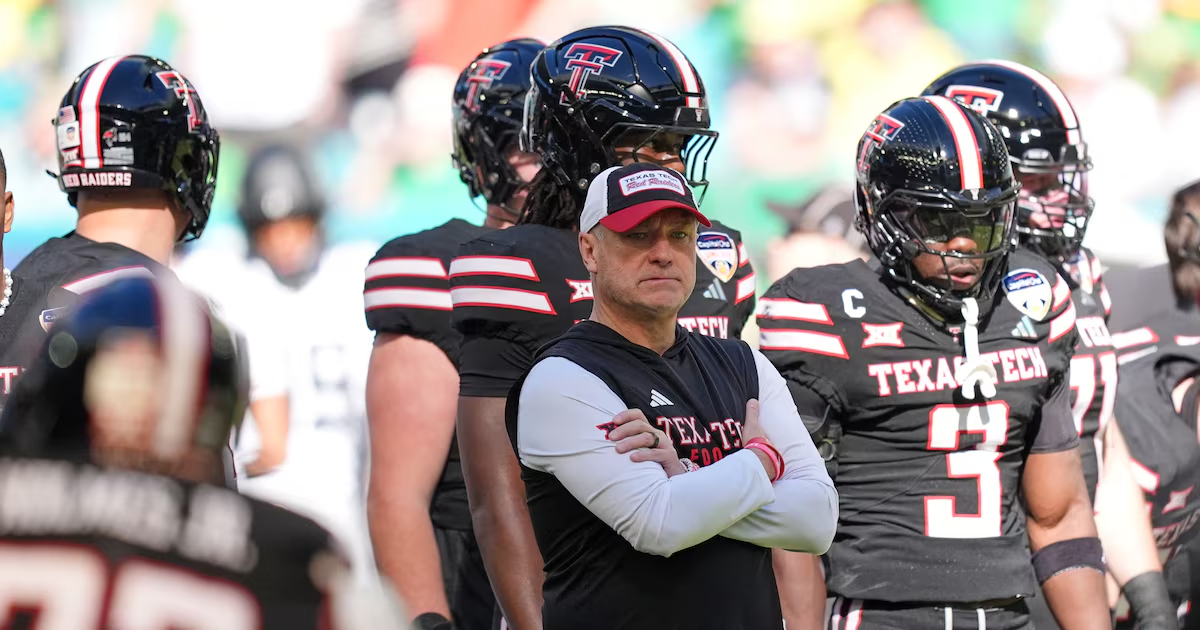
Here are five burning questions for Texas Tech football this offseason…
Texas Tech football outgrew the talent of its quarterback in one offseason. Behren Morton was a perfect fit for the Texas Tech program that existed in his four years prior, but head coach Joey McGuire’s unwavering loyalty to Morton may have cost this year’s team a shot at the national championship.
Morton will be graduating now, so the checkbooks are open for general manager James Blanchard to find a new QB1.
As of Friday, Blanchard and other Texas Tech athletes’ only public interest has been in Cincinnati quarterback Brendan Sorsby. Blanchard reposted Sorsby’s transfer portal announcement, and within an hour, 12 Texas Tech football players had commented on his post.
Sorsby is rated the No. 1 quarterback available in the portal by On3. He is regarded as a potential first-round pick if he enters the NFL draft, but the money college programs are expected to offer will surpass a rookie contract.
Other names to watch are Florida’s DJ Lagway and Arizona State’s Sam Leavitt.
Texas Tech will lose five premier starters on defense to exhausted eligibility: DT Lee Hunter, ILB Jacob Rodriguez, OLB David Bailey, OLB Romello Height and S Cole Wisniewski.
Those five made up 337 total tackles, 29 sacks and 15 forced fumbles in 2025.
Texas Tech will hit the portal to fill a handful of the upcoming defensive holes, but the Red Raiders will retain a handful of players who can step up. Rodriguez’s counterpart, linebacker Ben Roberts, is atop that list.
Between the Big 12 Championship and the Capital One Orange Bowl, Roberts had three interceptions. He also had a career-high 16 tackles in Thursday’s loss.
Roberts and budding linebacker/safety John Curry will man the interior linebacker spots in 2026 alongside at least one portal addition.
USC transfer running back Quinten Joyner tore his ACL on Aug. 18 before taking a regular season snap with Texas Tech. He had not been named the primary back, but his name was circulated in game strategy more frequently than Cameron Dickey and J’Koby Williams.
Dickey and Williams had strong freshman campaigns in their minimal snaps played, but McGuire didn’t know their full capabilities yet. So, before Joyner’s injury, he intended to run a three-headed system with no true starter.
McGuire remained content to run a 1A and 1B system with Dickey and Williams following the injury. It panned out perfectly. Dickey was a 1,000-yard rusher, and Williams thrived as a runner, receiver and kick returner.
Heading into 2025, they were all high-reward, experimental running backs, but one of the three may not be satisfied to play another season as a rotational player. None have entered the transfer portal as of Friday, but Dickey and Williams’ 2025 tape could warrant a payday and a guaranteed starter tag at multiple P4 programs.
The Micah Hudson saga has been nothing short of a rollercoaster. From becoming Texas Tech’s first five-star recruit to being used sparingly as a freshman to then transferring to Texas A&M and back to Lubbock a semester later, Hudson has yet to have his opportunity.
He reportedly struggled to grasp the playbook during his freshman season, which warranted his minimal usage. Then, when he returned to Texas Tech, the talent was too good for him to be anything more than a rotational piece.
Hudson has pledged his loyalty to McGuire and Texas Tech, so his name will be amongst the replacements for starters Caleb Douglas and Reggie Virgil. It’s reasonable to assume Texas Tech grabs one or two receivers from the portal, but Hudson is in a prime position to earn reps over the offseason.
His most recent snaps came against West Virginia in the season finale, when he had two touchdowns in the waning moments of a blowout win.
Texas Tech hung its hat on brotherhood this season. The talent was there at certain positions, but the culture McGuire built was a pillar of Texas Tech’s team-wide success.
However, Height noted in the locker room following Texas Tech’s 23-0 College Football Playoff loss that some players weren’t “locked in.”
No one was named, but there was evident frustration from defensive players with their offensive teammates. All of which is expected in the hour after a season-ending defeat, but if McGuire can’t reroute that energy into pushing for a title next season, it will hinder them.
Texas Tech is no longer the longshot team. There will be a huge shift in how team culture is established, going from the perennial middle-of-the-pack program to a place where the floor is now a playoff win.
Find more Texas Tech coverage from The Dallas Morning News here.


Ross Brawn to receive Autosport Gold Medal Award at 2026 Autosport Awards, Honouring a Lifetime Shaping Modern F1


Nike Signs 10 LSU Athletes to NIL deals


Stempien to seek opening for Branch County Circuit Court Judge | WTVB | 1590 AM · 95.5 FM
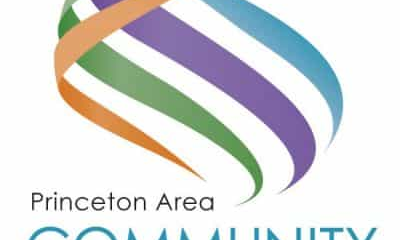

Princeton Area Community Foundation awards more than $1.3 million to 40 local nonprofits ⋆ Princeton, NJ local news %
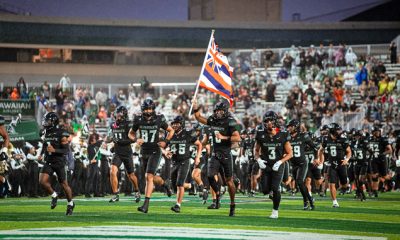

Downtown Athletic Club of Hawaiʻi gives $300K to Boost the ’Bows NIL fund


Kentucky AD explains NIL, JMI partnership and cap rules


PRI Show revs through Indy, sets tone for 2026 racing season
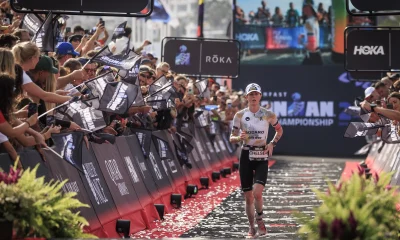

Young People Are Driving a Surge in Triathlon Sign-Ups
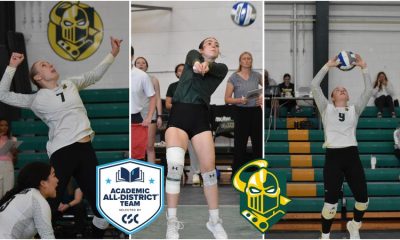

Three Clarkson Volleyball Players Named to CSC Academic All-District List


Teesside youth discovers more than a sport